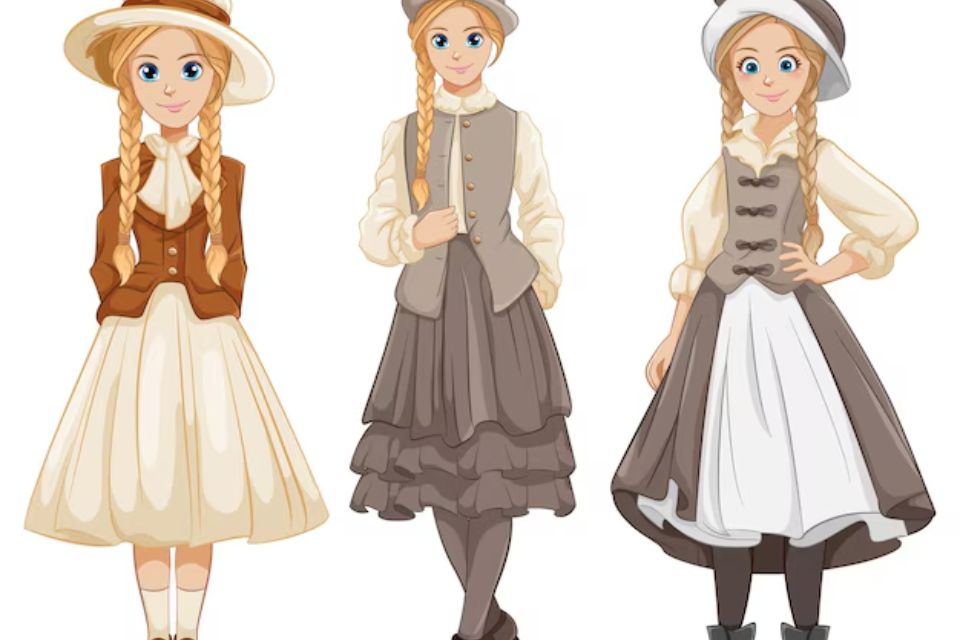
Fashion is more than just clothing—it’s a useful tool of self-expression, storytelling, and cultural representation. Throughout history, influential figures have used fashion to make statements, reflect their era, and define their identities. The Dress to Impress (DTI) theme allows individuals to step into the shoes of these legendary personalities, embracing their style while celebrating their legacies. Whether for themed events, educational purposes, or personal interest, embodying historical figures DTI through fashion is a captivating way to connect with history.
Understanding Historical Figures DTI
Historical Figures DTI (Dress to Impress) is a creative approach to fashion that highlights the iconic styles of influential individuals from various periods. This theme encourages people to recreate the looks of historical leaders, artists, revolutionaries, and cultural icons. Beyond aesthetics, it serves as a tribute to their impact and achievements, making history an interactive and engaging experience.
Why Historical Figures Matter
Influence On Culture & Society
Many historical figures were pioneers in their respective fields, shaping culture, politics, and social movements. Their fashion choices often represented the ideologies they stood for, setting trends that remain relevant even today.
Fashion As A Statement
From royal gowns to military uniforms, clothing has long been a symbol of power, rebellion, and innovation. Figures like Marie Antoinette and Napoleon Bonaparte used their attire to project authority and status, while others, such as Mahatma Gandhi, deliberately embraced simplicity to convey deeper messages.
Bridging The Past & Present
Modern designers frequently draw inspiration from historical fashion, reinterpreting elements from past eras to create contemporary styles. This blend of tradition and innovation keeps history alive in the fashion industry.
Themes To Explore In Historical Figures DTI
Royalty & Nobility
Kings, queens, and emperors were known for their elaborate attire, symbolizing their power and wealth. Examples include:
- Queen Elizabeth I – Regal gowns, ruffled collars, and pearls
- King Louis XIV – Embroidered coats, wigs, and extravagant accessories
Revolutionary Leaders
These individuals made history through their bold actions and distinctive styles:
- Napoleon Bonaparte – Military uniforms, gold epaulettes, and bicorne hats
- Harriet Tubman – Practical yet symbolic garments of resistance
Visionary Artists & Thinkers
Creative minds often expressed their identity through unique fashion choices:
- Leonardo da Vinci – Renaissance robes and painter’s attire
- Frida Kahlo – Traditional Mexican dresses with floral crowns
Warriors & Military Icons
Figures who led armies and shaped warfare had signature attires reflecting their roles:
- Joan of Arc – Battle armor and medieval warrior outfits
- Alexander the Great – Tunics with intricate armor detailing
Hollywood & Pop Culture Legends
Fashion from the entertainment industry also has a historical impact:
- Audrey Hepburn – Elegant black dresses and timeless accessories
- Elvis Presley – Iconic jumpsuits and flamboyant stage outfits
Fun Facts About Historical Figures & Fashion
Fashion has always played a important role in defining historical figures, often reflecting their status, beliefs, or personal style. Some intriguing facts highlight the influence of these icons on fashion. Cleopatra, for example, popularized elaborate eyeliner, a beauty trend that remains relevant today. Abraham Lincoln, known for his towering height, strategically used his signature top hat to appear even more imposing. Winston Churchill had custom-made suits with sewn-in pockets specifically designed to hold his cigars. Marie Antoinette, a true fashion influencer of her time, introduced extravagant gowns and towering wigs that set new trends in the French court.
How To Master The Historical Figures DTI Look
Mastering the Historical Figures DTI (Dress to Impress) look requires a thoughtful approach to detail and authenticity. The first step is to thoroughly research the historical figure of choice, understanding their era, style, and the significance behind their clothing. Choosing authentic fabrics that resemble historical textures and patterns helps create a more accurate representation. Accessories play a important role in completing the look—hats, jewelry, and footwear must align with the fashion of the time. Beyond the clothing, understanding the context of the time period enhances the portrayal, allowing individuals to truly embody the essence of the figure. Whether for themed events, educational purposes, or personal interest, paying attention to these elements ensures a more immersive and respectful homage to historical fashion.
Summary
Historical Figures DTI is more than just a dress-up theme—it’s a way to appreciate history, culture, and fashion. By stepping into the styles of past icons, individuals can experience history in a tangible and interactive way. Whether for educational events, themed parties, or personal enrichment, embracing historical fashion allows us to connect with the legacies that continue to shape our world.
FAQs
What is Historical Figures DTI?
Historical Figures DTI (Dress to Impress) is a fashion theme that encourages dressing as iconic historical figures to celebrate their legacy and style.
How do I choose a historical figure for DTI?
Select a figure based on personal interest, cultural impact, or event themes. Research their attire and historical significance.
Where can I find costume ideas for historical figures?
Look at museum exhibits, historical paintings, fashion archives, and period films for inspiration.





